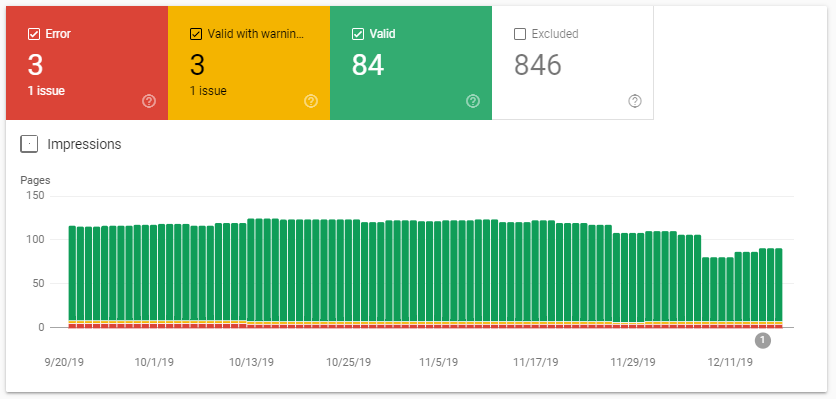Your Website Traffic Explained
Whether you’re a well-established industrial company or in the initial stages of your company’s journey, fully understanding your website traffic is one of the most important indicators of your marketing strategy and its performance.
By digging into your traffic channels and their individual performance, you can identify what areas of your strategy are performing well and which channels need some extra attention.
.png?width=1200&name=Blog%20Social%20Posts%20(29).png)
Google Analytics’ channels report gives you all the insight you need to understand how your audience are finding you online and how well-received your website is within that channel. The most used default Google channels are Direct, Organic, Social, Referral, Email, Paid Search and Display.
The marketing strategies you have set up to attract users to your site will be reflected within different channels of the channel report.
Direct Traffic
One of the bigger traffic sources is often direct traffic. Users mostly fall under this channel when they’ve accessed your website by inputting your URL directly into their browser or by a bookmarked page.
However, direct traffic can get a little confusing as it also acts as the catchall for users when Google Analytics can’t identify a referrer. This can happen when your user accesses your site from:
- A linked PDF or office document
- A mobile social media app such as Facebook and Twitter
- Email marketing if tagging is not set up correctly
- A URL made by certain URL shorteners
- A http site if your site is a https site
As you can see, some of these users would not truly be considered ‘direct’, however there are ways in which you can mitigate non-direct traffic falling into the direct channel report. One of these is to ensure all your links are tagged correctly using UTM tracking via Google’s URL Campaign Builder tool.
It is also important to note that bot traffic will fall under direct traffic, therefore it is important to have the ‘all known bots and spiders’ filter turned on. Although this won’t filter out 100% of bot traffic, Google will be able you to identify the majority and the rest you should be able to identify yourself (for example a large spike in direct traffic which has an avg. session duration of 00:00 usually indicates bot traffic).
If you feel your direct traffic is far too high compared to other channels and you’ve exhausted all other avenues such as bot traffic and email marketing, there could be an issue with your site tracking. Often, if a site has complicated or multiple cookie banners, Google Analytics will count a user twice. This throws off the nice clean data you spent ages refining!
So, now you’ve filtered out all of the non-direct ‘direct’ traffic, you should see a cleaner, more accurate representation of users who are coming to you directly.
Why is Direct Traffic Important?
If people are coming to you directly, we can assume they already know you. Therefore, direct offers you great insight into your brand awareness. If your direct traffic is low compared to other channels, perhaps you could implement a brand awareness campaign in a bid to increase your direct traffic and put your brand front-of-mind. You should have a good mix between direct (people with previous knowledge of you as a brand) and organic (people who may not know you and therefore can become new business).
When looking at direct traffic, or any traffic source for that matter, you want to focus on the behaviour metrics. This will give you an insight into how your site is being received by this audience. For example, a direct channel grouping with a high bounce rate and low avg. session duration indicates a very low engaged audience. This could be due to a poor user journey, which you can then review.
Organic
Organic traffic is another very important channel to watch. This is how you can measure your SEO and keyword strategy efforts as organic traffic focuses on users who have found you organically via search engines such as Google and Bing.
Organic traffic directly correlates to your ranking keywords, therefore traffic from this source can fluctuate depending on your keyword visibility. It is extremely important to understand what keywords are driving users to your site as this gives you an insight into the quality of your traffic. To find this information, you should link Google Analytics to your site’s Search Console property. Alternatively, Intergage can discover your site’s ranking for all your keywords, plus where your competitors sit in our free digital marketing competitor reports or digital marketing audit offering.
Sometimes, you may experience a spike or fall in organic traffic, despite not having made any significant changes to your website. This can prove problematic. Google algorithm updates can sometimes cause a disruption of organic traffic, for example the Google core update that ran in May 2020 had a heavier focus on regularly updated content which meant that some sites lost keyword visibility for not updating or uploading fresh content to the site. Find out more on that here.
If you’re still struggling to understand a dip in organic traffic, you may want to consider buyer behaviour or search intent. Are people still searching for your product? Perhaps your keywords are outdated, and people are using different terms to find your services. Take a look at Google Search Console and Google Trends. This should give you an insight into what users are searching for and how you can better position yourself in front of your audience.
Why is Organic Traffic Important?
To be receiving a good amount of organic traffic indicates that you are being found via search engines. By digging deeper into this data and looking at the engagement metrics you can identify whether you are reaching a qualified audience. For example, a high bounce rate could indicate poor targeting or misleading meta descriptions that offer the user an unexpected experience.
Organic traffic is one of the best (and free) ways to encourage growth and attract new business. You should therefore ensure you’re doing everything you can to increase your search engine visibility and organic traffic.
Referral
Google Analytics classes referral traffic as any user who has followed a backlink to your site, providing the referrer doesn’t fall under any other channel category (for example, paid search). This usually comes from other domains that link to your site and can be a great way of building up brand awareness and site authority.
Backlinking should be a focus for many businesses looking to improve their marketing strategy. Partnering up with relevant industry publications or businesses can target your buyer personas directly if done right.
But be cautious! Toxic backlinks can have the adverse effect and Google will not be impressed with sites which are using spam backlinking practices or are linked by poor ranking domains. Therefore, it is important to always evaluate your referrals; if there are some questionable referring sites, it’s best to try and remove the link altogether.
.png?width=1200&name=Blog%20Social%20Posts%20(28).png)
Why is Referral Traffic Important?
Referral traffic is a great way of measuring your PR efforts by seeing which external sites are bringing you the most traffic. These kinds of referrals build your online presence and allow you to reach a bigger, yet highly targeted audience.
You can also identify some issues with tracking and tagging through your referral traffic. For example, if your paid advertising campaigns aren’t tagged correctly, users will fall into this category. That’s why it’s so important to track your campaigns with identifiable UTM tracking parameters so you can accurately measure your success and ROAS.
Paid
If you’re running paid advertising campaigns, you should (hopefully) be seeing some traffic come via the Paid Traffic source. Paid Traffic is any user that comes to your site by clicking on an ad, this includes Google Ads, Bing Advertising, LinkedIn and Facebook advertising (if you’re tracking correctly). This does not, however, include any advertising you are doing on the Display Network, as this will come under Display Traffic.
Why is Paid Traffic Important?
The Paid Traffic source in the channels report allows you a deeper insight into how your paid advertising campaigns are performing. It is really important with paid advertising to look at your engagement metrics to ensure you are paying for qualified, engaged traffic and not wasting money on disinterested, irrelevant traffic – you can find out more about that here.
If you have goals set up in Google Analytics (which we would highly recommend), take a look at your paid traffic conversion rates. Once again, this gives you an insight into how relevant the audience finding your ads is. High bounce rate and low engagement could indicate misleading ads, which means you might as well be throwing money down the drain!
Again, it’s a good idea to try and understand how your competitors are using paid search so you can understand how much they’re spending, which keywords they’re sponsoring and where paid advertising fits into their strategy. We cover all of this in our free digital marketing competitor reports and of course our digital marketing audit offering.
Social
Social traffic includes any user that comes to your site via social sites such as Facebook, Twitter, YouTube, Pinterest, Instagram etc. Social traffic can also appear in your referral traffic, however it is easiest to report on which social media platforms are performing well for you by looking at this report instead.
Why is Social Traffic Important?
By looking at the Social Traffic in your channels report, you can identify which platforms are driving the most traffic to your site. This information will often allow you to pinpoint where your target audience most like to ‘hang out’ online which can, in turn, inform where you focus most of your social media efforts.
This report will also allow you to see what kind of content resonates with your target audience and through which social network, again informing your social strategy as you move forward.
Email traffic hosts all the users who have come to your site via email if the email campaigns are tagged correctly. This traffic can come via a link in your email copy and in your email footer.
Why is Email Traffic Important?
Looking at the email source in your channels report gives you an understanding of how well your email campaigns are performing, however information through Google Analytics can be limited in this respect, therefore it is sometimes more insightful to review your email marketing efforts in your email marketing software.
Display
If you’ve been utilising any of the display networks, this is where your users will show. This catches all users who have clicked on a display ad. Some of the most common are image or banner ads on another domain, such as another site’s blog or news page.
Why is Display Traffic Important?
If you’re advertising on other sites, you want to know that your targeting and messaging is being received. Therefore, looking at your engagement metrics on users who have come to your site via display ads is crucial to the progression and success of your display advertising.
In conclusion, all channel reports are important and provide valuable insight into the strengths and weaknesses of your marketing campaigns. Understanding this data enables you to make informed decisions which will continue to push your businesses forward, attracting new users and driving conversions.





